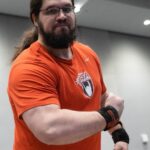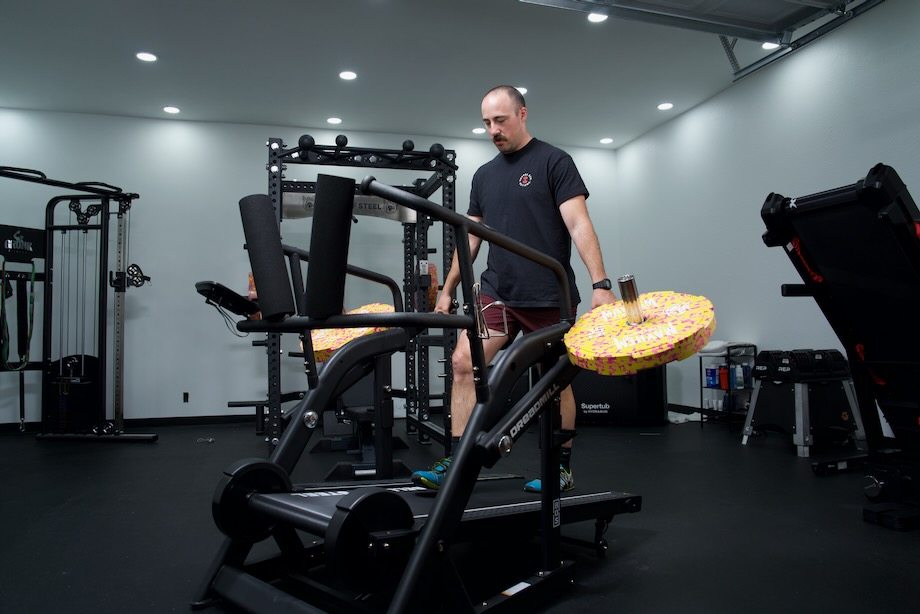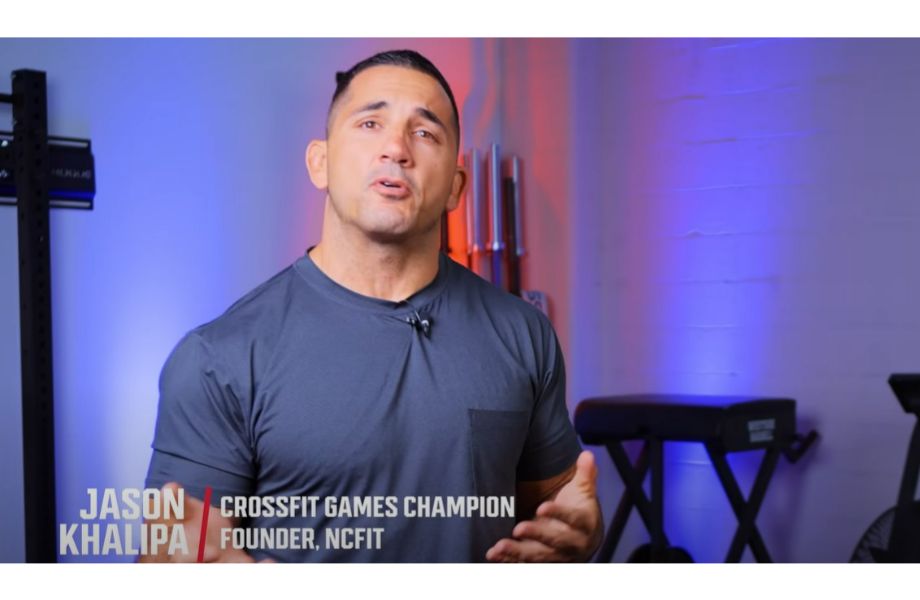There’s something truly magical about seeing elite athletes perform great feats, like watching Usain Bolt smoke the competition in seconds flat, Simone Biles execute the most jaw-dropping, show-stopping vaults ever seen, or Eli Manning launch a 32-yard Hail Mary pass to David Tyree to keep the drive alive and essentially clinch the win for the New York Giants at Super Bowl XLII.
We all love a highlight reel, but athletes don’t train just for these brief moments of greatness. No, they need to be ready to perform at the highest level for extended periods of time, which means they must build their muscular endurance so that when the going gets tough, they can get going and keep going all the way to the buzzer!
We asked Caine Wilkes, OLY, USAW-L1, and GGR senior staff writer, to help answer the question, “What is muscular endurance?” You’ll also get tips for improving your muscular endurance and information on why it’s important for everyone, from elite athletes to everyday folks and weekend warriors.
RELATED: Stamina vs Endurance
What Is Muscular Endurance?
Hitting the gym to improve your athletic performance may be high on your list of priorities if you play sports, but not everyone cares about competing at the highest level once they’re adults.

Instead, the focus shifts to making your activities of daily living (ADL) more manageable. It’s not about your top speed or bench press one-rep max, but whether or not you feel like taking a break after lugging the vacuum from room to room. It’s not about fancy footwork, but if you’re still solid after a 12-hour work shift where you’re predominantly on your feet.
Your ability to continue to move and function, whether it’s sport-specific or associated with ADLs, for an extended period of time is referred to as your muscular endurance.
How Do You Measure Muscular Endurance?
There are many ways to assess muscular endurance; however, the most common methods involve doing as many bodyweight exercises, namely push-ups, sit-ups, and air squats, as possible to determine your muscles’ ability to withstand repeated trauma and fatigue.
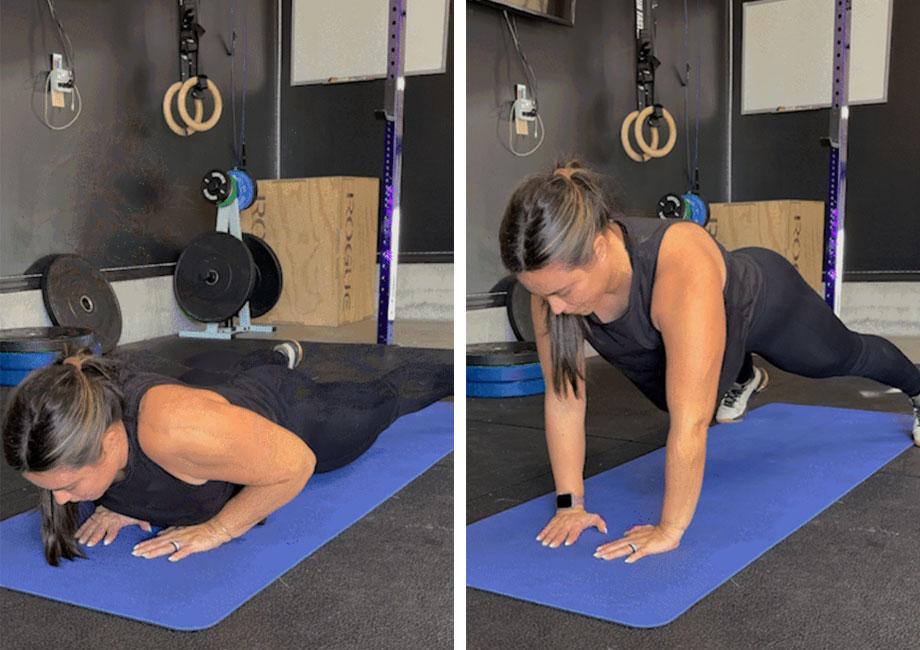
For example, the American Council on Exercise uses the Push-Up Assessment Protocol1 to test an individual’s upper-body endurance based on age, gender, and how many push-ups they can complete in a single set without rest.
Many tests exist to establish your muscle endurance. All involve putting your muscles under stress, whether by racking up reps or performing physical activity for an extended period to measure how you resist fatigue.
How Can You Improve Your Muscular Endurance?
While performing short bursts of high-intensity training works wonders for your muscular strength and power, improving muscular endurance requires a different approach. Instead, you’ll want to keep things low and slow as, according to PLoS One2, “low-intensity training involving high repetitions is recommended to enhance muscular endurance.”
That’s because your body is essentially composed of two types of muscle fibers: fast-twitch fibers, which “are abundant in elite power athletes,” and slow-twitch fibers, which “are seen in high abundance in elite endurance athletes,” according to Sports (Basel)3.
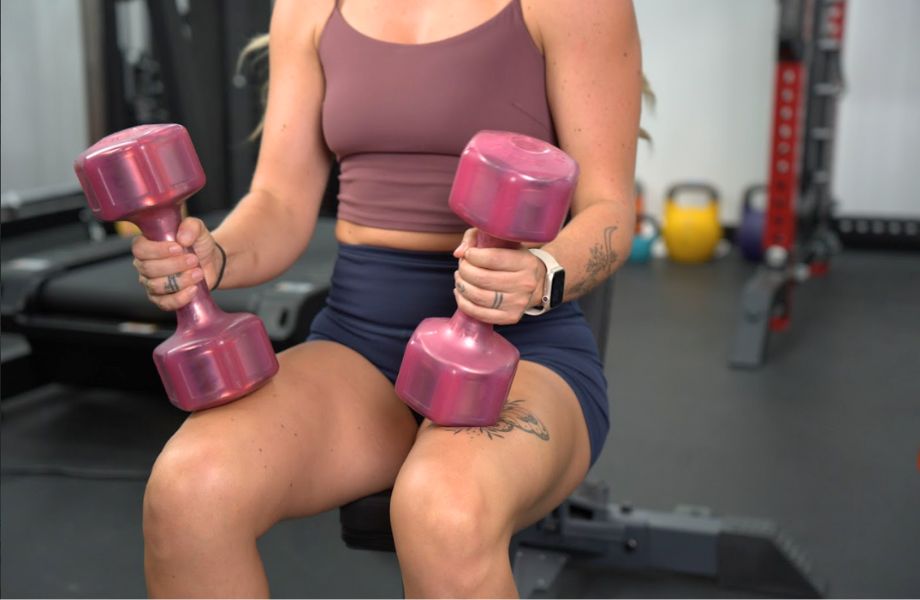
How do you create a muscular endurance training program that targets and strengthens your slow-twitch muscle fibers? The National Strength and Conditioning Association4 recommends:
- Light weights: Lifting weights and performing other forms of resistance training is totally within bounds, provided you don’t exceed 70% of your one-rep max (1RM).
- More sets, more reps: The idea here is to keep going when the going gets tough, so instead of snack-sized sets featuring a small number of reps, shoot to do 3+ sets of 10 to 25 repetitions per exercise.
- Minimal rests: Long rest periods allow your heart rate to decrease and your muscles to recuperate, diminishing the effect of this type of training. You want to reduce your rest periods or, if possible, eliminate them. Keep those working muscles working!
RELATED: How Many Reps to Build Muscle
What Are Muscular Endurance Exercises?
We’ve established what muscular endurance is, how you can measure it, and the approach you should adopt if you’re looking to improve it, but what specific exercises can you incorporate into your routine to see some increases in your muscle endurance?
“The beauty about muscular endurance training is that, provided you’re performing a large volume of work at a low intensity with minimal rest, you can use most exercises,” says Caine Wilkes, OLY, USAW-L1.

The best muscular endurance exercises include:
- Bodyweight exercises: Beginner- and intermediate-level bodyweight exercises, like push-ups, sit-ups, air squats, and lunges, make good muscular endurance exercises. Advanced movements like pull-ups and muscle-ups may work, too, but only if you’re already training at a high level.
- Isometric exercises: Holding a plank, wall squat, or glute bridge for an extended period is an excellent way to build your muscular endurance.
- Carries: Think about it. How often do you carry objects in everyday life? Train to hold that stuff for longer by working the farmer’s carry, sandbag carry, bottoms-up kettlebell carry, and more into your endurance training.
- Resistance training: Although resistance training is typically associated with increasing muscle strength, you can change the adaptation by altering the approach. For example, swap out heavy barbell deadlifts for a high-rep set of light dumbbell RDLs. As long as you’re going light, doing several reps, and lifting with proper form, you can train muscular endurance using tried-and-true resistance training.
“The trickiest part about creating an effective muscular endurance exercise program is the scaling,” says Caine. “Increasing your training volume too rapidly puts you at risk for injury or overtraining. Likewise, staying stagnant or scaling too slowly leaves you with minimal or no results to show for your time.”
RELATED: What Is Progressive Overload?
It’s a slippery slope, but one that you can navigate with the aid of a certified personal trainer, coach, or other qualified fitness professional.
Muscular Endurance Benefits
You can use muscular endurance training to condition your body to go the distance, so checking the illustrious Ironman Triathlon off your list may become a realistic goal as you progress.
That’s cool for hopeful triathletes, but what about the rest of us? What health benefits does muscular endurance offer the average gym-goer or fit-minded individual?
Can Lead to Better Heart Health
A 2014 study in the International Journal of Sports Medicine5 endeavored to determine the relationship between cardiovascular risk factors, muscular endurance, cardiovascular fitness, and maximal strength.
The results showed that study participants with great muscular endurance and cardio physical fitness showed a decrease in cardiovascular risk factors, “whereas maximal strength was not associated with any of the cardiovascular risk factors.”
May Help Improve Body Composition
A 2021 study in Scientific Reports6 measured the body composition, as well as various other cardiometabolic parameters, of study participants following a 12-week muscle endurance training program.
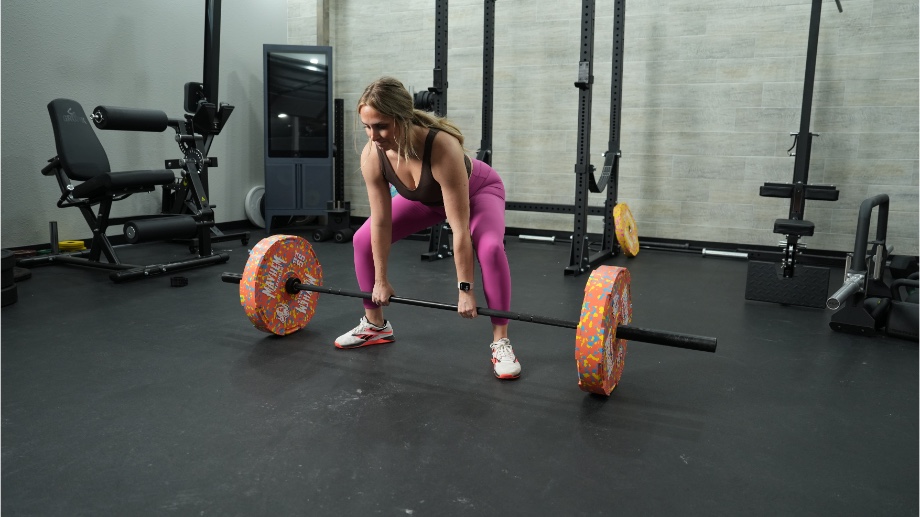
The results showed a positive effect on body composition, including a decrease in fat mass and an increase in lean muscle mass, as well as other general health and wellness adaptations, including “significantly decreased [blood pressure].” So, those looking to lose weight, burn fat, and manage chronically high blood pressure may consider incorporating a muscular endurance exercise program to help reach their goals.
RELATED: Does Cardio Lower Blood Pressure?
May Improve Cognitive Function
Studies show7 that exercising regularly, no matter what type of exercise you’re doing, promotes cognitive function and staves off the ill effects of aging, including cognitive impairment, memory loss, and the development of diseases like dementia, Alzheimer’s disease, and Parkinson’s disease.
A 2023 meta-analysis in Biology (Basel)8, however, took things a step further and investigated the effects of “a single bout of endurance exercise” on the brain, concluding that even engaging in muscle endurance training once could produce significant increases in the presence of brain-derived neurotrophic factor (BDNF), a key molecule in memory formation.
So, it’s possible that adopting a muscular endurance training program may help improve cognitive function, enhance memory, and keep the adverse effects of aging at bay to some degree.
RELATED: Fight the Effects of Aging With the 8 Best Exercises For Seniors
What Is Muscular Endurance? Final Thoughts
Everyone has reasons for hitting the gym, but an often-overlooked yet vitally important one is increasing muscular endurance. Having muscular endurance doesn’t seem as glamorous as having raw strength, speed, and power, but there are health benefits and practical applications associated with muscular endurance.
For example, muscular endurance:
- Allows your muscles to resist fatigue longer
- Enables you to complete everyday activities with greater ease
- May help improve your cardiovascular health and decrease risk factors
- May help improve your body composition and reduce body fat
- May help decrease blood pressure
- May help improve cognitive function and memory
Now that you’re a muscular endurance expert, it’s time to put yourself to the test. Give muscular endurance training a try today, and go the distance!
What Is Muscular Endurance? FAQs
What are three types of muscular endurance?
Generally speaking, muscular endurance is all about resisting fatigue and continuing to perform, even when every muscle group in your body is sapped. There are three main ways to do this and, thus, three types of muscular endurance:
–Isometric endurance: Isometric exercises involve holding a contraction for an extended period of time. Studies show9 that they’re effective for building muscle, promoting healthy joints, and increasing muscular endurance.
–High-rep sets: Performing just about any resistance exercise, provided you’re not going north of 70% of your 1RM, is effective for improving muscular endurance as long as you’re doing a high number of repetitions, preferably between 10 and 25 per set.
–Longer duration: You can focus on sprints and explosive strength training if you don’t plan to perform for more than a few seconds at a time, but if you’re looking to improve muscular endurance, the goal is to go low and slow.
Why is muscular endurance important?
Muscular endurance training offers many health benefits, but having excellent muscular endurance is important for quality of life because it improves your ability to perform activities of daily living (ADL).
Activities like cleaning the house, doing laundry, carrying groceries, or working a long shift on your feet are examples of everyday things where a little extra muscle endurance may come in handy.
How long does it take to build muscular endurance?
Many beginners are discouraged if they don’t see results immediately after adopting a new workout routine, and muscular endurance training may take even longer than other types of training due to its low-intensity nature.
“It’s important not to rush or try to increase your training volume too rapidly,” warns Caine Wilkes, OLY, USAW-L1, and GGR senior staff writer. “Forcing your muscles to perform for significantly longer than they’re accustomed to often leads to overtraining and may increase your risk of injury.”
RELATED: 10 Sign of Overtraining
So, if you’re new to muscular endurance training, start slow, progress gradually, and budget at least a few weeks before you expect to see any major improvements in your abilities.
References
- American Council on Exercise. Push-Up Assessment Test. ACE
- Kojima Y, Fukusaki C, Ishii N. Effects of hyperoxia on dynamic muscular endurance are associated with individual whole-body endurance capacity. PLoS One. 2020;15(4):e0231643. Published 2020 Apr 21. doi:10.1371/journal.pone.0231643
- Plotkin DL, Roberts MD, Haun CT, Schoenfeld BJ. Muscle Fiber Type Transitions with Exercise Training: Shifting Perspectives. Sports (Basel). 2021;9(9):127. Published 2021 Sep 10. doi:10.3390/sports9090127
- Clayton N, Drake J, Larkin S, et al. Foundations of Fitness Programming. National Strength and Conditioning Association (NSCA). 2015. Accessed September 23, 2024.
- Vaara JP, Fogelholm M, Vasankari T, Santtila M, Häkkinen K, Kyröläinen H. Associations of maximal strength and muscular endurance with cardiovascular risk factors. Int J Sports Med. 2014;35(4):356-360. doi:10.1055/s-0033-1349092
- Jamka M, Mądry E, Krzyżanowska-Jankowska P, et al. The effect of endurance and endurance-strength training on body composition and cardiometabolic markers in abdominally obese women: a randomised trial. Sci Rep. 2021;11(1):12339. Published 2021 Jun 11. doi:10.1038/s41598-021-90526-7
- Xu L, Gu H, Cai X, et al. The Effects of Exercise for Cognitive Function in Older Adults: A Systematic Review and Meta-Analysis of Randomized Controlled Trials. Int J Environ Res Public Health. 2023;20(2):1088. Published 2023 Jan 7. doi:10.3390/ijerph20021088
- Liang Z, Zhang Z, Qi S, Yu J, Wei Z. Effects of a Single Bout of Endurance Exercise on Brain-Derived Neurotrophic Factor in Humans: A Systematic Review and Meta-Analysis of Randomized Controlled Trials. Biology (Basel). 2023;12(1):126. Published 2023 Jan 13. doi:10.3390/biology12010126
- Lum D, Barbosa TM. Brief Review: Effects of Isometric Strength Training on Strength and Dynamic Performance. Int J Sports Med. 2019;40(6):363-375. doi:10.1055/a-0863-4539



